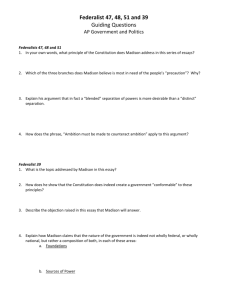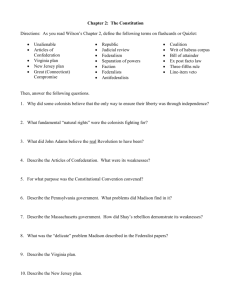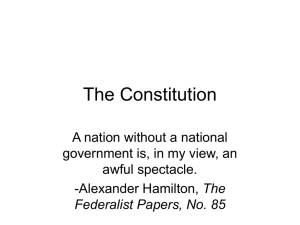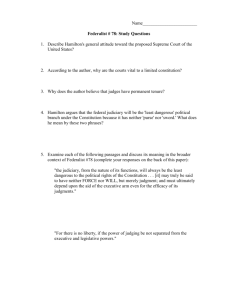Federalist No. 51 (1788)
advertisement
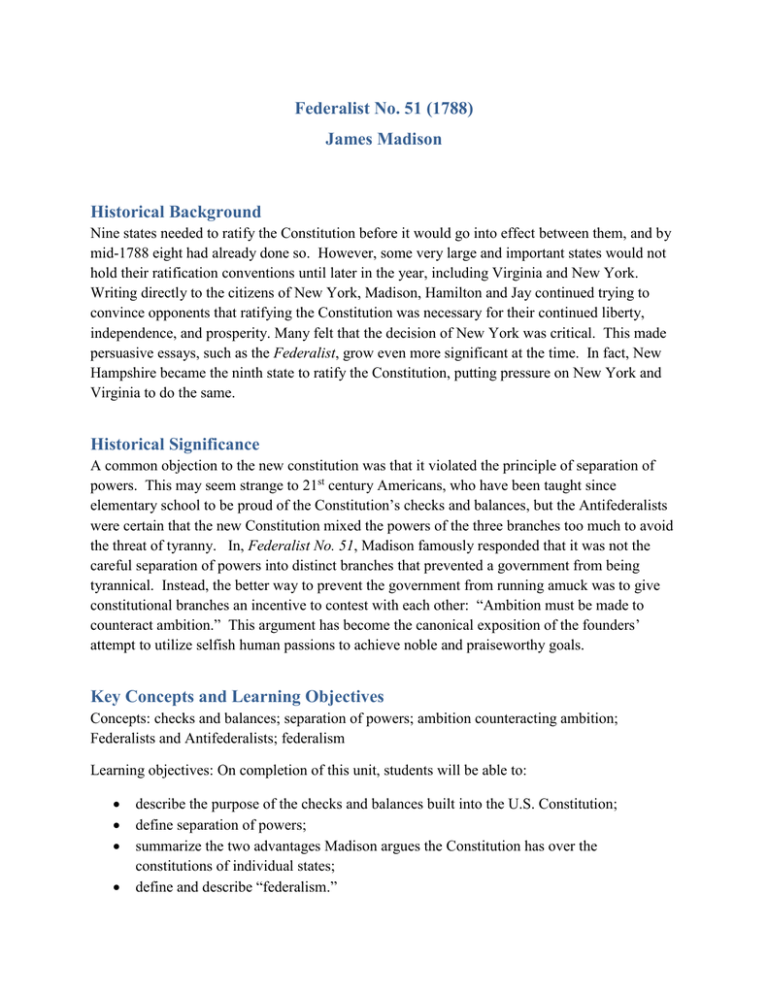
Federalist No. 51 (1788) James Madison Historical Background Nine states needed to ratify the Constitution before it would go into effect between them, and by mid-1788 eight had already done so. However, some very large and important states would not hold their ratification conventions until later in the year, including Virginia and New York. Writing directly to the citizens of New York, Madison, Hamilton and Jay continued trying to convince opponents that ratifying the Constitution was necessary for their continued liberty, independence, and prosperity. Many felt that the decision of New York was critical. This made persuasive essays, such as the Federalist, grow even more significant at the time. In fact, New Hampshire became the ninth state to ratify the Constitution, putting pressure on New York and Virginia to do the same. Historical Significance A common objection to the new constitution was that it violated the principle of separation of powers. This may seem strange to 21st century Americans, who have been taught since elementary school to be proud of the Constitution’s checks and balances, but the Antifederalists were certain that the new Constitution mixed the powers of the three branches too much to avoid the threat of tyranny. In, Federalist No. 51, Madison famously responded that it was not the careful separation of powers into distinct branches that prevented a government from being tyrannical. Instead, the better way to prevent the government from running amuck was to give constitutional branches an incentive to contest with each other: “Ambition must be made to counteract ambition.” This argument has become the canonical exposition of the founders’ attempt to utilize selfish human passions to achieve noble and praiseworthy goals. Key Concepts and Learning Objectives Concepts: checks and balances; separation of powers; ambition counteracting ambition; Federalists and Antifederalists; federalism Learning objectives: On completion of this unit, students will be able to: describe the purpose of the checks and balances built into the U.S. Constitution; define separation of powers; summarize the two advantages Madison argues the Constitution has over the constitutions of individual states; define and describe “federalism.” Questions to Explore Madison argues that the best security against tyranny is to give “to those who administer each department [branch] the necessary constitutional means and personal motives to resist encroachments of the others.” How will the Constitution give members of Congress, the President and Supreme Court Justices “personal motives” to do this? What are the means given to act on those motives? Madison argues that “the policy of supplying, by opposite and rival interests, the defect of better motives, might be traced through the whole system of human affairs, private as well as public.” Do you see that the kind of checks and balances created within the government also reoccur in personal relations between individuals? If yes, how so? If not, why not? Evaluate Madison’s argument historically: have the types of checks and balances that exist in the Constitution done their job to make the government stay within acceptable bounds and serve the common good? Explain why or why not, while marshaling evidence from specific historical incidents. What conception of human nature is at work in the Federalist Papers? Do you think this conception is accurate?


